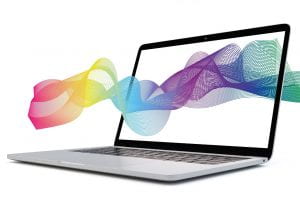Using Your LMS as a Portal to the Larger World Wide Web
In spite of COVID-19, these are exciting times to be teaching online. The internet has literally and figuratively eroded the walls of the classroom. In addition to providing flexibility for time and space to both you and your students, it has also provided an on-ramp to the collaboration occurring in many places in the networked world.
Your LMS can be excellent for the administrative areas where security is vital, such as managing who is in your class, who has access to grade information, and who can confidentially contact you with class issues. Research has shown that students like to use learning management systems…but more for the convenience factor than for learning. Our job as faculty is to shift this emphasis so that our course opens up additional avenues for learning.
To do that, in many cases, we need to move outside of the LMS. Most of us teach in areas where it would enhance the class to bring in outside discipline experts…without physically bringing them to our campus. Webconferencing and social media make this easy!
I like how Livia B differentiates between an LMS and a learning portal:
Is a learning portal different from an LMS?
It isn’t, really. But it is. It’s a fine line between them.
While both terms are often used interchangeable, there are situations when learning management system is a better choice of words than learning portal — and the other way around.
It’s somewhat like the difference between an iPhone 6S and your iPhone 6S.
An iPhone 6S has a 4.7″ display, four available colors, touch ID, a 12-megapixel camera and a 5-megapixel one, great video quality, iOS 9 technology, and a bunch of other features.
Your iPhone 6S is rose gold, has a 4.7″ display, your fingerprint for the secure access of the phone, your amazing pictures from Bali or from your back yard, with your friends and family, your selfies, your videos of your kids and pets, your documents, your apps, your everything. It’s still an iPhone 6S, but it’s your iPhone 6S.
Likewise, a modern LMS comes with a comprehensive set of features: a sleek user interface, content authoring tools, gamification, 10+ types of assignments, collaboration tools, translation tools, integrations with other systems, reporting tools, mobile apps, etc., etc.
So think about how to use your LMS to connect to this richer world that already exists on the web. We no longer as faculty have to gather the course material and present it to the students. Rather, we can take advantage of the varied array of excellent material on the web and provide for a rich learning process by co-opting our students as fellow researchers.
There are literally thousands of web applications that can be used to engage your students in the learning process. The key is not see your LMS as a closed system but rather as a portal to the wider world wide web.
In Teaching Online Toolbox, we discuss various web-based tools for connecting and collaborating, such as blogs, screencasting. Slack or Teams, and Google applications.
As an example of one use in a past class, I wanted to bring some national speakers in to my online class. We used synchronous web conferencing to set up a website for this interaction. Not only did we have a synchronous online verbal discussion with them and our students, but we were able to open the session up to interested people in the field through an invitation sent out on Twitter. On the night of the discussion, we had nine people from around the country join our five guest speakers and our students for a lively and very relevant discussion.
So check out The Online Teaching Toolbox for more information on:
- Blogs
- Google Applications
- Podcasting
- RSS Feeds
- Social Bookmarking
- Social Media
- Web Conferencing
